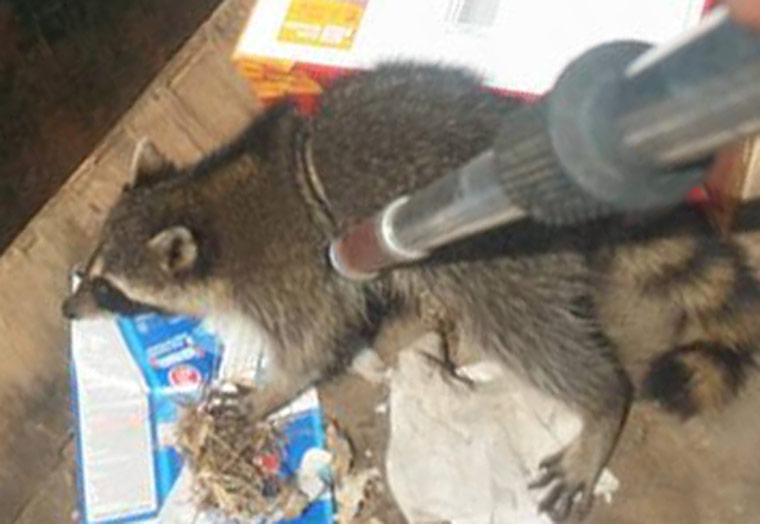-
info@aaanimalcontrol.com
Call us for help in your town
Humane Wildlife Education
What exactly is a snare trap?
Need wildlife removal in your hometown? We service over 500 USA locations! Click here to hire us in your town and check prices - updated for year 2020.
Snares were originally designed to trap wild animals such as rabbits, foxes, hares and squirrels, and they are often used by many people across the United States to trap animals that are classed as pests. In some cases, the snare traps are used just for pest removal, but in others, they are used in the hunt for food, and even fur / skins.

Snare traps are very popular because they are so easy, not only to use, but also to make yourself. They are technically wire or cable nooses that are anchored somewhere. The animal runs over the trap, the noose tightens around the body, neck or limb of the animal, and the animal is then unable to escape. Simple and effective it might be, humane it is most definitely not.
Studies that were performed in the United Kingdom by animal cruelty groups actually showed that over forty percent of all animals captured in snare traps were animals NOT meant to have been caught at all. So, in just 60% of cases, the trapper catches what it actually wants to catch. When you think about it, that’s not the highest success rate. The rate goes up when you head Transatlantic, and in Michigan alone, the traps catching non-targets were only around 20%.
Why are Snare Traps Inhumane?
As well as not having the greatest success rate when it comes to trapping / capturing the animal you actually want to trap, snare traps are very well known to be inhumane. Unlike rat or mouse traps, they do not kill the animal immediately, instead just holding it still so that it is unable to escape. The more the animal tries to wriggle free, the more the noose tightens, and in some cases, it can get so bad that the limb is actually cut off from the body completely. As you can probably imagine, it is then rare for the animal to survive. It is seriously wounded. If blood loss doesn’t kill it, another predator will easily overcome it, or it could die or hyperthermia, dehydration or starvation.
If the animal doesn’t wriggle around too much, it might not suffer this fate, but it will still be slightly wounded and stuck. It is more than likely going to encounter a predator, and it won’t be able to run away or defend itself, meaning it will result in death yet again. Often in a rather brutal and bloody way that you will then need to clean up.
What you need to remember is that this trap is designed to immobilize only. It is not designed to kill the creature it traps, although this is often the outcome. If you are led to believe this is a humane approach to pest removal, you are very much mistaken. In fact, you should read these three facts, confirmed by academics Centre for Animal Welfare and Anthrozoology at Cambridge University:
1 - Snare traps are not humane, nor do they operate as such. This applies for both traps designed to kill, and traps designed to immobilize.
2 - Snare traps are basic, primitive traps that can and do go wrong, and also often catch animals that you don’t want to catch. The result is suffering, pain and almost certain death to household pets and wild animals alike.
3 - Although not marketed as a kill-trap, snare traps have a much higher morbidity rate than other traps designed to capture and not kill, including live cage traps.
For more information, you may want to click on one of these guides that I wrote:
How To Guide: Who should I hire? - What questions to ask, to look for, who NOT to hire.
How To Guide: do it yourself! - Advice on saving money by doing wildlife removal yourself.
Guide: How much does wildlife removal cost? - Analysis of wildlife control prices.
animals in the attic
noises in the attic


















